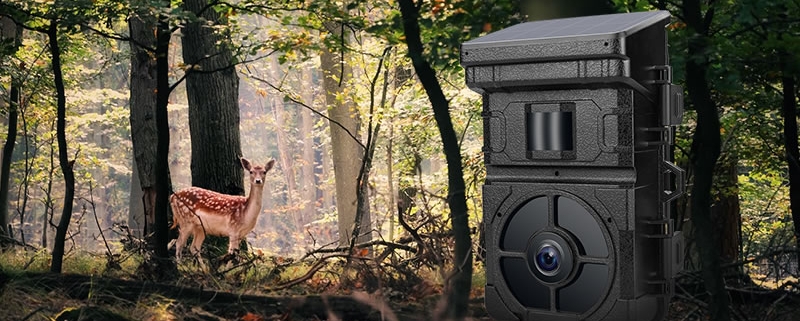Trail Camera Buyer’s Guide
If you are shopping for a trail camera for the first time, you may feel confused about its size, resolution, triggering distance and speed, power supply, night vision and other functions. Here are some guide points may be helpful.
- How do trail cameras work?Trail camera is triggered by a combination of heat and motion so there must be both present for the camera to take a photo or video. For example, when animal such as deer passed in front of trail camera, its PIR sensor will start and feedback, then the camera will automatically take photos or videos. But if it is a snake, the camera cannot work since it is cool blooded.
- What resolution we shouldchoose? Higher resolution means clearer photos and videos but also more money. There are 4K, interpolated 4K, 1080P, 720P version in the market. Think about the target price and then choose the right one.
- Why the triggering distance and speed are different? Usually the trigger distance is around 15-30 meters in the market. If you want to take more and far distance photos, then choose the one with longer trigger distance. If not, choose 15 meters or 20meters version. The triggering time for the hunting camera is around 0.4~2S. Many items in the market may be marked with fake specification. But it is enough for most of the situations. Fast triggering time does mean other parameters are also good, too.
- What is the power supply for the trail camera? Most trail camera use AA battery. Some support 4 AA, 8AA, 12AA, 18650 battery and extrasolar panel. Mini trail camera usually comes with 4AA battery, it is mini portable size and stand by around 4 months. 8AA battery trail camera may standby around 6 months. 12 AA may be around 8 months. If you want to have more longer stand by time, solar panel would be a good choice and it can charge itself automatically.
- What is the night vision function of trail camera? Trail camera can take white and black photos and videos during night. Since trail cameras are with infrared LED and makes night vision possible. Some trail cameras may perform well during daytime but weak in night time. And there are also the opposite If you would like both time performs well, you may choose the dual lens trail camera. One lens is special for daytime and one lens is special for night time.
- What is the detection zone (PIR FOV) and lens (FOV)? The detection zone is the area in which a camera is able to sense motion and trigger a photo. The two factors which determine the detection zone are detection width and detection range(in above 3rd item). Usually the detection zone we also called it PIR FOV. The common parameter in the market is 45°C -120° For the lens FOV, the bigger one may be with distortion while the smaller one may be with less narrow range.
Some of you have very specialized needs or concerns. For example, if you do not want untie a camera when it has fixed, you may need WiFi trail camera. If you want the trail camera to send message to you directly, you may need a 3G trail camera. If you have to download the pictures and photos or even live streaming, you may want a 4G trail camera.




